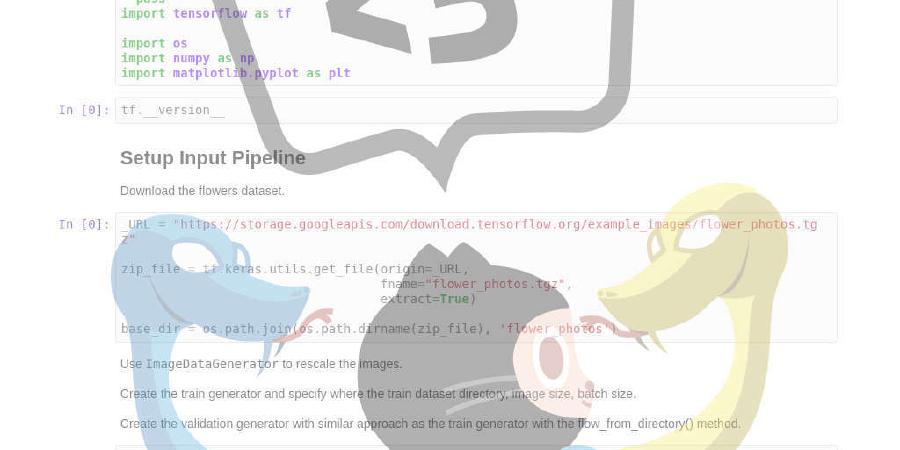quantumblacklabs/kedro

A Python library that implements software engineering best-practice for data and ML pipelines.
| repo name | quantumblacklabs/kedro |
| repo link | https://github.com/quantumblacklabs/kedro |
| homepage | https://kedro.readthedocs.io/ |
| language | Python |
| size (curr.) | 12496 kB |
| stars (curr.) | 2135 |
| created | 2019-04-18 |
| license | Other |

| Theme | Status |
|---|---|
| Latest Release | |
| Python Version |  |
master Branch Build |
|
develop Branch Build |
|
| Documentation Build | |
| License |  |
| Code Style |  |
| Questions |  |
What is Kedro?
“The centre of your data pipeline.”
Kedro is a development workflow framework that implements software engineering best-practice for data pipelines with an eye towards productionising machine learning models. We provide a standard approach so that you can:
- Worry less about how to write production-ready code,
- Spend more time building data pipelines that are robust, scalable, deployable, reproducible and versioned,
- And, standardise the way that your team collaborates across your project.
How do I install Kedro?
kedro is a Python package. To install it, simply run:
pip install kedro
See more detailed installation instructions, including how to setup Python virtual environments, in our installation guide and get started with our “Hello Word” example.
What are the main features of Kedro?
 A pipeline visualisation generated using Kedro-Viz
A pipeline visualisation generated using Kedro-Viz
| Feature | What is this? |
|---|---|
| Project Template | A standard, modifiable and easy-to-use project template based on Cookiecutter Data Science. |
| Data Catalog | A series of lightweight data connectors used for saving and loading data across many different file formats and file systems including local and network file systems, cloud object stores, and HDFS. The Data Catalog also includes data and model versioning for file-based systems. Used with a Python or YAML API. |
| Pipeline Abstraction | Automatic resolution of dependencies between pure Python functions and data pipeline visualisation using Kedro-Viz. |
| The Journal | An ability to reproduce pipeline runs with saved pipeline run results. |
| Coding Standards | Test-driven development using pytest, produce well-documented code using Sphinx, create linted code with support for flake8, isort and black and make use of the standard Python logging library. |
| Flexible Deployment | Deployment strategies that include the use of Docker with Kedro-Docker, conversion of Kedro pipelines into Airflow DAGs with Kedro-Airflow, leveraging a REST API endpoint with Kedro-Server (coming soon) and serving Kedro pipelines as a Python package. Kedro can be deployed locally, on-premise and cloud (AWS, Azure and Google Cloud Platform) servers, or clusters (EMR, EC2, Azure HDinsight and Databricks). |
How do I use Kedro?
Our documentation explains:
- Best-practice on how to get started using Kedro
- A “Hello World” data and ML pipeline example based on the Iris dataset
- A two-hour Spaceflights tutorial that teaches you beginner to intermediate functionality
- How to use the CLI offered by
kedro_cli.py(kedro new,kedro run, …) - An overview of Kedro architecture
- Frequently asked questions (FAQs)
Documentation for the latest stable release can be found here. You can also run kedro docs from your CLI and open the documentation for your current version of Kedro in a browser.
Note: The CLI is a convenient tool for being able to run
kedrocommands but you can also invoke the Kedro CLI as a Python module withpython -m kedro
Note: Read our FAQs to learn how we differ from workflow managers like Airflow and Luigi.
Why does Kedro exist?
Kedro is built upon our collective best-practice (and mistakes) trying to deliver real-world ML applications that have vast amounts of raw unvetted data. We developed Kedro to achieve the following:
- Collaboration on an analytics codebase when different team members have varied exposure to software engineering best-practice
- Focussing on maintainable data and ML pipelines as the standard, instead of a singular activity of deploying models in production
- A way to inspire the creation of reusable analytics code so that we never start from scratch when working on a new project
- Efficient use of time because we’re able to quickly move from experimentation into production
The humans behind Kedro
Kedro was originally designed by Aris Valtazanos and Nikolaos Tsaousis to solve challenges they faced in their project work. Their work was later turned into an internal product by Peteris Erins, Ivan Danov, Nikolaos Kaltsas, Meisam Emamjome and Nikolaos Tsaousis.
Currently the core Kedro team consists of:
- Yetunde Dada
- Ivan Danov
- Richard Westenra
- Dmitrii Deriabin
- Lorena Balan
- Kiyohito Kunii
- Zain Patel
- Lim Hoang
- Andrii Ivaniuk
Former core team members with significant contributions are: Gordon Wrigley, Nasef Khan and Anton Kirilenko.
And last but not least, all the open-source contributers whose work went into all Kedro releases.
Can I contribute?
Yes! Want to help build Kedro? Check out our guide to contributing.
Where can I learn more?
There is a growing community around Kedro. Have a look at our FAQs to find projects using Kedro and links to articles, podcasts and talks.
What licence do you use?
Kedro is licensed under the Apache 2.0 License.
We’re hiring!
Do you want to be part of the team that builds Kedro and other great products at QuantumBlack? If so, you’re in luck! QuantumBlack is currently hiring Software Engineers who love using data to drive their decisions. Take a look at our open positions and see if you’re a fit.






